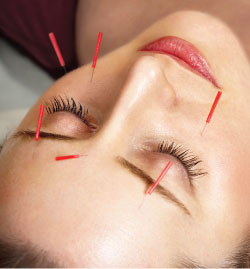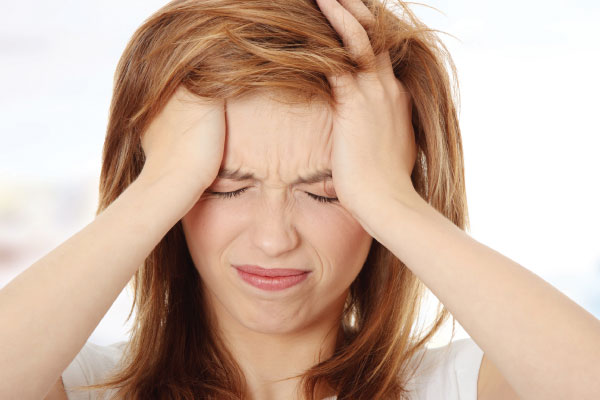We all get them. Sometimes they leave us debilitated, other times we brave through the pain. But the truth of the matter is, headaches drive us up the wall. Behnaz Sanjana investigates what’s going on in our heads.
If someone skips an important work event because of a headache, you’ll get some eye rolling. Just pop a pill and get on with it, right? But only those who suffer the fury of a throbbing head can really appreciate the gravity of the problem. The World Health Organisation describes headaches as extremely painful and disabling. It also notes that it is an underestimated, under-recognised and under-treated condition worldwide.
The Types
Dr Srinivas Mallya, specialist neurologist at the Al Hilal Hospital, says that headaches can be classified as primary and secondary. Primary headaches are those without any identifiable abnormalities causing them. These include: migraines, tension headaches and cluster headaches. Secondary headaches are those which have a cause: viz. sinusitis, bleeding in the brain, and infections.
So what does a headache feel like? Migraines are typically a throbbing or pulsating sensation on one side of the head. They bring on a wave of nausea and can prove to be pretty disabling, making the person irritable and intolerant to any light or sound.
“A tension headache affects the whole head and does not have any effects of a migraine. They are often described as having a tightness or taut band like sensation on the head,” says Dr Srinivas.
People mistake sinus headaches for migraines, given that they are no less annoying than the latter. A sinus headache is a deep and constant pain in the cheekbones, forehead and behind the bridge of the nose. “Sinusitis can be identified by specific features such as purulent discharge from the nose, fever, bad odour and fullness in the face and ears,” adds Dr Srinivas.
A headache could be brushed off as a common ailment, but must never be ignored when it is accompanied with vision disturbances, weakness or numbness in the limbs or with fever, weight loss or lethargy. A headache at the back of the head also needs immediate medical attention.
Troublesome Triggers
 Dr Babu Ramachandran, general practitioner at AMH Bahrain, reveals what role certain factors play in the agony of headaches.
Dr Babu Ramachandran, general practitioner at AMH Bahrain, reveals what role certain factors play in the agony of headaches.
Diet. A word synonymous with many things but, when it comes to headaches, they’re tightly bound. You know when you’re out and about shopping and you’ve logged a few miles speed walking from one outlet to another and suddenly realise you haven’t had any water or lunch many hours later? Then that deep nagging pain takes up residence in your head. Ouch.
Migraine sufferers must beware of certain foods that trigger off a bad bout of pain. Cheese, red wines, caffeine and chocolate are some culprits worth steering clear of. Monosodium glutamate (MSG), a flavour enhancer in Chinese foods, is known to cause headaches too. The list of headache triggers is quite long and varies from person to person.
The phenomenon that has plagued the 21st century: stress – with the way we work it’s no wonder we get headaches. It’s easier said than done but try to find a successful stress buster and put everything on pause to keep stress headaches at bay.
Hitting the gym more than a few times a month is said to keep you as headache free as possible. Those happy endorphins released during exercise are also painkillers, so there’s no better excuse to get on the treadmill is there? However, there are a few exercise must-dos that our expert recommends: “Hydrate yourself well. Dehydration can lead to headaches. Eating an hour or two before exercising provides the necessary energy for exercise and a warm-up session is a must. These tips will prevent headaches during exercise.”
If you smoke, your headaches could be down to nicotine – a major component of your cigarette. “Nicotine stimulates the blood vessels in the brain to become narrow and this can trigger headaches. Smoking also stimulates the nerves in the back of the throat, contributing to headaches,” says Dr Babu. Never had a puff but still feel a headache sprouting? Blame it on passive smoking or an allergy to smoke.
Occasional headaches shouldn’t be alarming. They could be due to something as simple as a drop in estrogen levels just before the menstrual period, or may manifest as a withdrawal symptom if you haven’t had your routine caffeine fix.
“Although there is nothing wrong in popping a painkiller, abusing over-the-counter medications to cure headaches is harmful. Persistent or recurrent headaches must be evaluated by a medical professional. Never self-treat a chronic headache with over-the-counter medications,” he warns.
Alternative Therapy
Acupuncture is a part of traditional Chinese medicine, dating back some 5,000 years. Its fundamentals lie in the understanding of the energy flow or ‘Chi’ of the human body.
“Fine needles are used to stimulate the body’s classical acupuncture points depending on the disorder that needs to be treated. It has now become widely accepted, valid and an effective line of treatment in the medical field. And yes, an experienced practitioner can effectively treat headaches,” says Dr Lucy Liu, of the Chinese Medical Clinic in West Riffa. She has a number of patients who suffer severe migraines and headaches.
Dr Lucy believes there are many causes for headaches and migraines, such as neck compression or blood pressure variations and sinus problems. When it comes to effective treatment, one size surely doesn’t fit all. “Each patient is different and I start by taking their pulse and asking them about their symptoms and medication – this helps me decide the best treatment for them. Normally I don’t use any other medicine, as acupuncture is usually very effective for migraines, headaches and sinus symptoms and has no side effects,” she adds.
Among the many headache sufferers she has helped, Dr Lucy tells of her patient who had suffered severe migraines for 14 painstaking years. “She wasn’t able to sleep at night and conventional medicine failed to alleviate the pain. After ten sessions of acupuncture, she is now much better.”





































